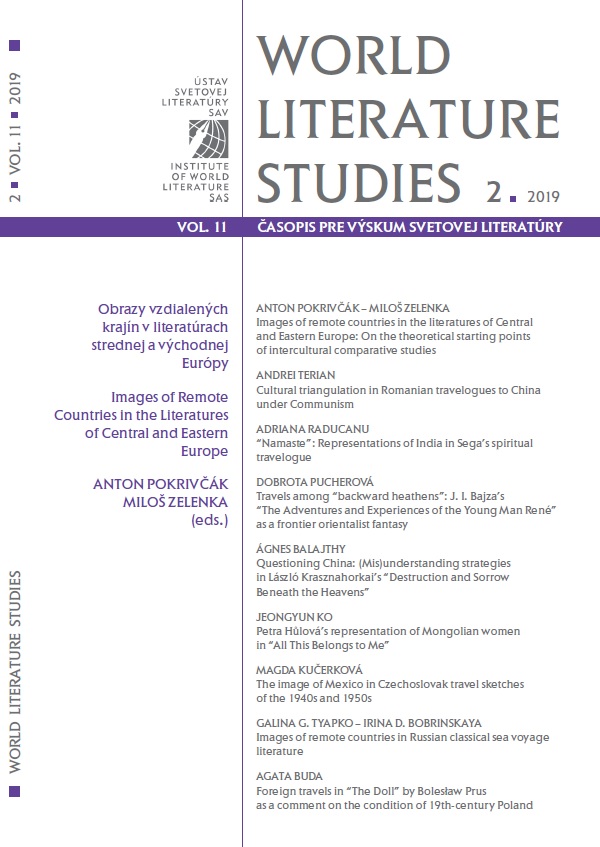“Namaste”: Representations of India in Sega’s
spiritual travelogue
“Namaste”: Representations of India in Sega’s
spiritual travelogue
Author(s): Adriana Răducanu Subject(s): Comparative Studies of Religion, Romanian Literature, Culture and social structure , History of Religion
Published by: Ústav svetovej literatúry, Slovenská akadémia vied
Keywords: Mihai Eminescu; Mircea Eliade; Hauntological/ontological rebellion; Octavian Sega; Post-modernism; East/West;
Summary/Abstract: India has occupied a prominent place in the Romanian literary and cultural landscape since the 19th century and it continues to do so in ours. The claim of an almost-tradition of representations of India in Romanian literature can be easily sustained via a perusal of the works of Mihai Eminescu (the national poet) and Mircea Eliade (the famous comparatist of religions).India enabled the former to surpass a certain anxiety of influence, at both ontological and aesthetic levels and came to constitute a cultural axis mundi for the latter, a powerful catalyst for a lifetime work. This article will focus on Octavian Segarceanu’s (Sega) spiritual travelogue, Namaste: A Novel of Spiritual Adventures in India (the first in a trilogy) and argue that in the Romanian contemporary literary landscape he is one of the most prominent continuators of writings either alluding to or focusing on India. His spiritual travelogue depicts a country perceived by the post-modern consciousness of the contemporary man, acknowledged as a network of multiple (and often antagonistic) cultural influences, but also a country echoing his predecessors’ works. An act of ontological rebellion inspired Sega, the copy writer turned writer to question basic, internal modes of existing and to focus not only on being but being-able-to-be. In so doing, the present article argues that the author/foreigner/wanderer both turns the readership into witnesses to the candid autobiography of his feelings, as well as surveys the makings of a cosmopolitan identity, situated at the crossroads between West and East, film and literature, philosophy and faith.
Journal: World Literature Studies
- Issue Year: 11/2019
- Issue No: 2
- Page Range: 31-44
- Page Count: 14
- Language: English

